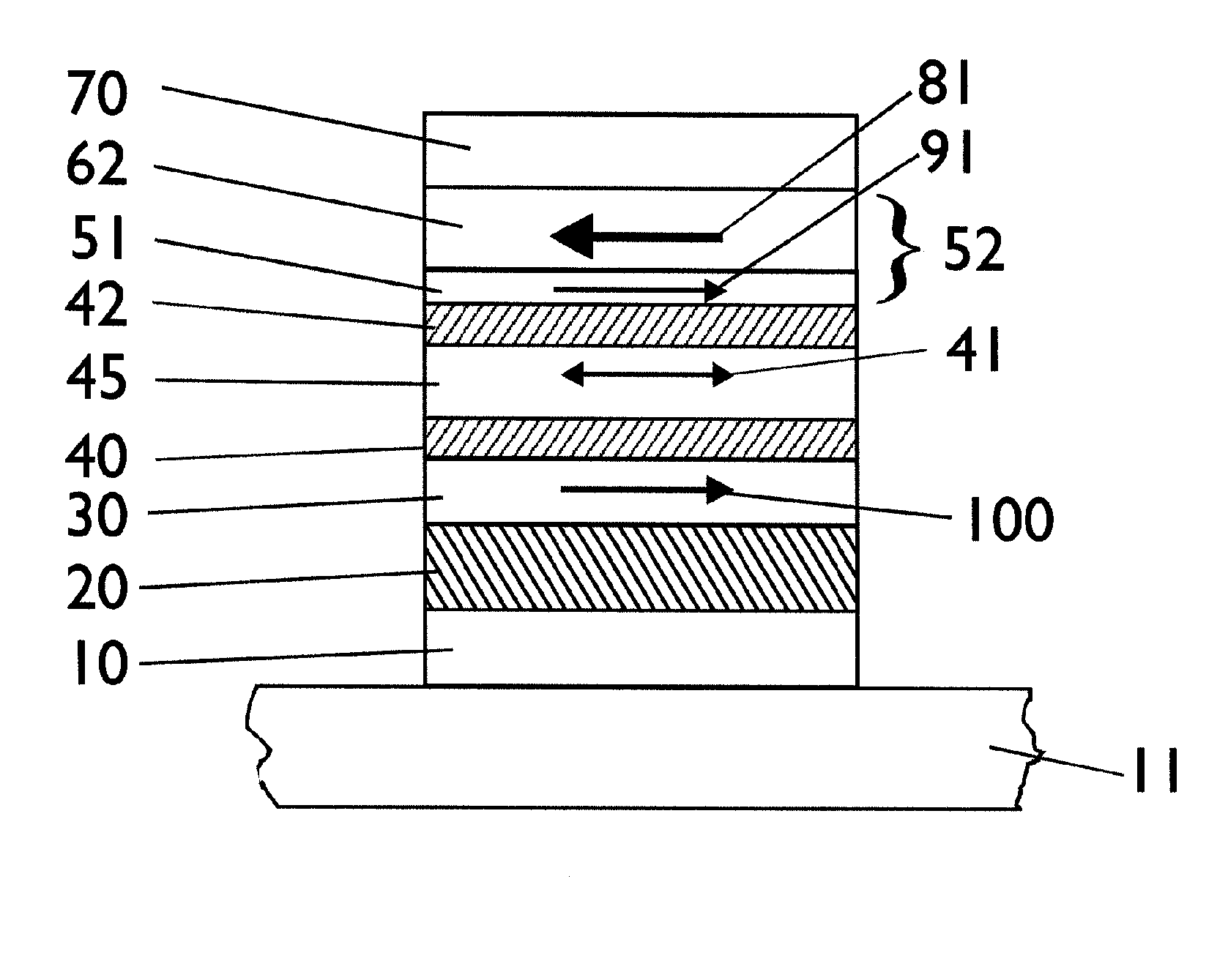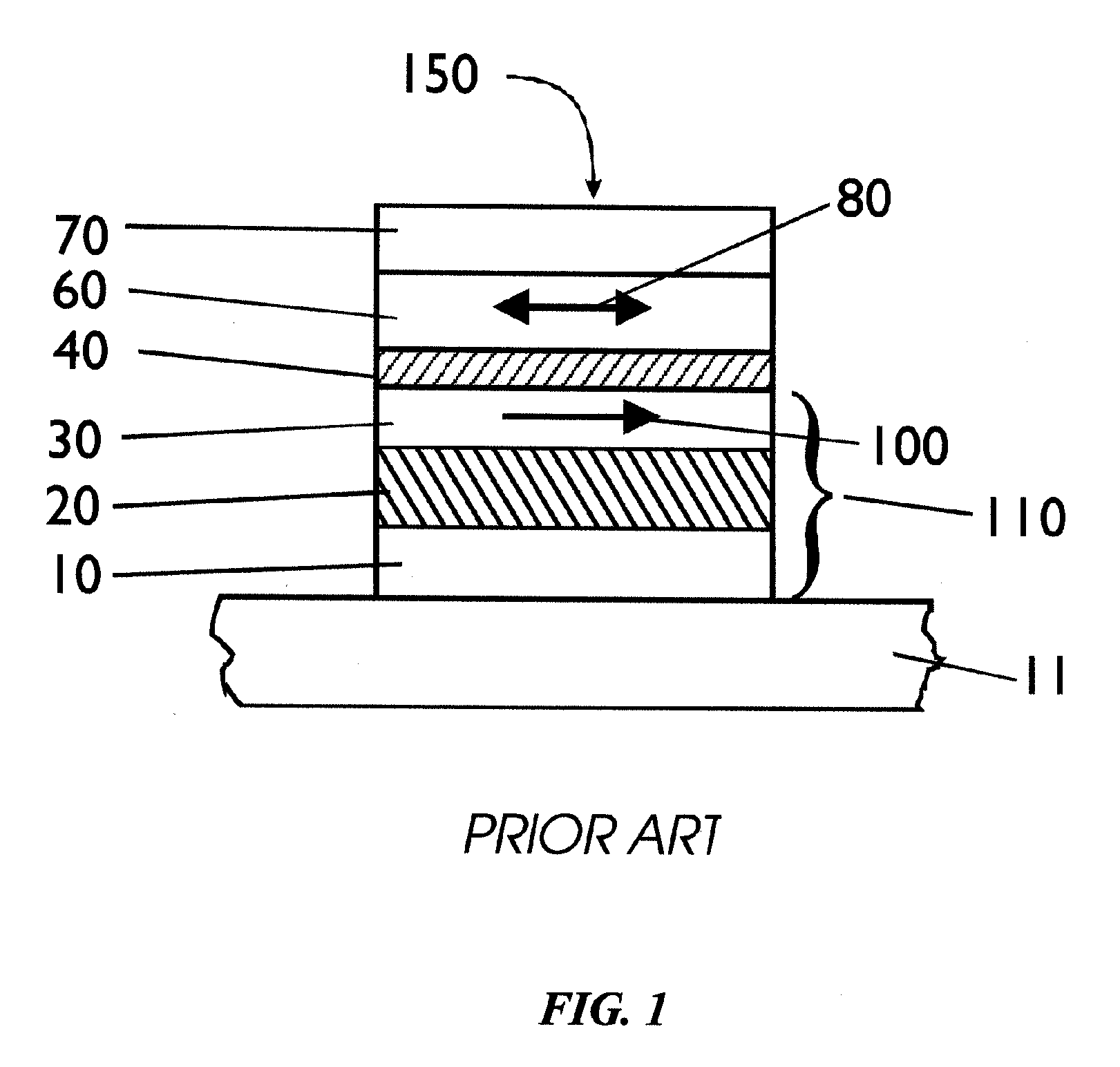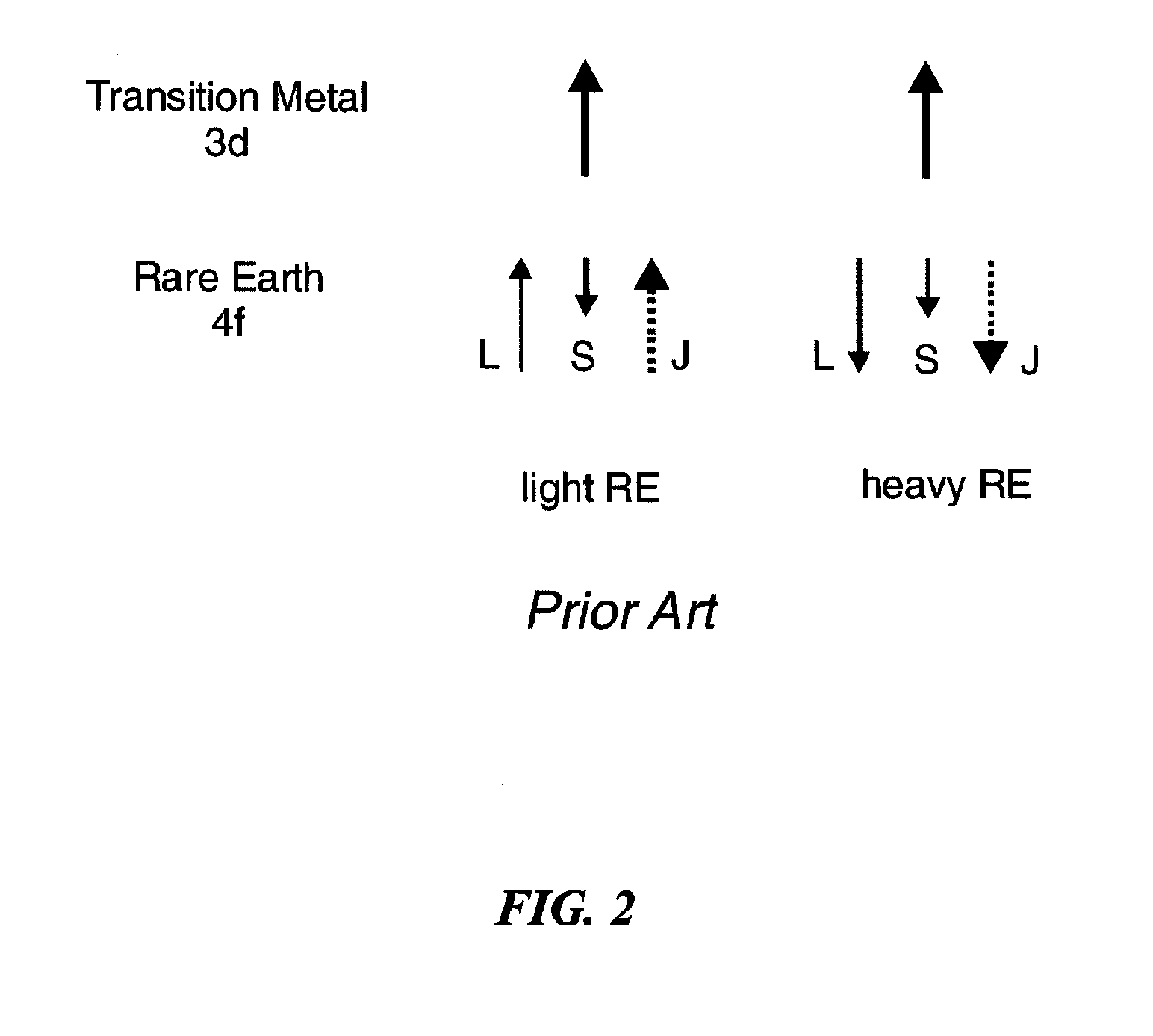Spin-polarization devices using rare earth-transition metal alloys
a metal alloy and rare earth technology, applied in the field of rare earth-transition metal alloys, can solve the problems of poor growth quality of srruo/sub>3/sub>, low tsp of ni and these alloys, and inapplicability of srruo/sub>3/sub> for device applications
- Summary
- Abstract
- Description
- Claims
- Application Information
AI Technical Summary
Benefits of technology
Problems solved by technology
Method used
Image
Examples
Embodiment Construction
[0063]The tunneling spin polarization of various RE—TM alloys was measured using superconducting tunneling spectroscopy (STS). Although these measurements are carried out at low temperatures and large magnetic fields, these studies allow the direct determination of the spin polarization of electrons tunneling from the RE—TM layer. The tunneling magnetoresistance of MTJ devices incorporating such layers is related to the magnitude of the spin polarization through Julliere's formula. However, the STS structures are in many ways simpler than MTJ devices with regard to the control of the magnetic orientation of the magnetic electrodes, so such studies provide a more direct and reliable measurement of the spin polarization of the tunneling current.
[0064]FIG. 4 shows the TSP measured at a temperature of 0.25 K and in an in-plane magnetic field of 2 T for Co—Gd alloys of various compositions using either Al2O3 or MgO tunnel barriers (I). The STS samples are comprised of shadow masked ferro...
PUM
| Property | Measurement | Unit |
|---|---|---|
| Curie temperature | aaaaa | aaaaa |
| magnetization | aaaaa | aaaaa |
| crystallization temperature | aaaaa | aaaaa |
Abstract
Description
Claims
Application Information
 Login to View More
Login to View More - R&D
- Intellectual Property
- Life Sciences
- Materials
- Tech Scout
- Unparalleled Data Quality
- Higher Quality Content
- 60% Fewer Hallucinations
Browse by: Latest US Patents, China's latest patents, Technical Efficacy Thesaurus, Application Domain, Technology Topic, Popular Technical Reports.
© 2025 PatSnap. All rights reserved.Legal|Privacy policy|Modern Slavery Act Transparency Statement|Sitemap|About US| Contact US: help@patsnap.com



